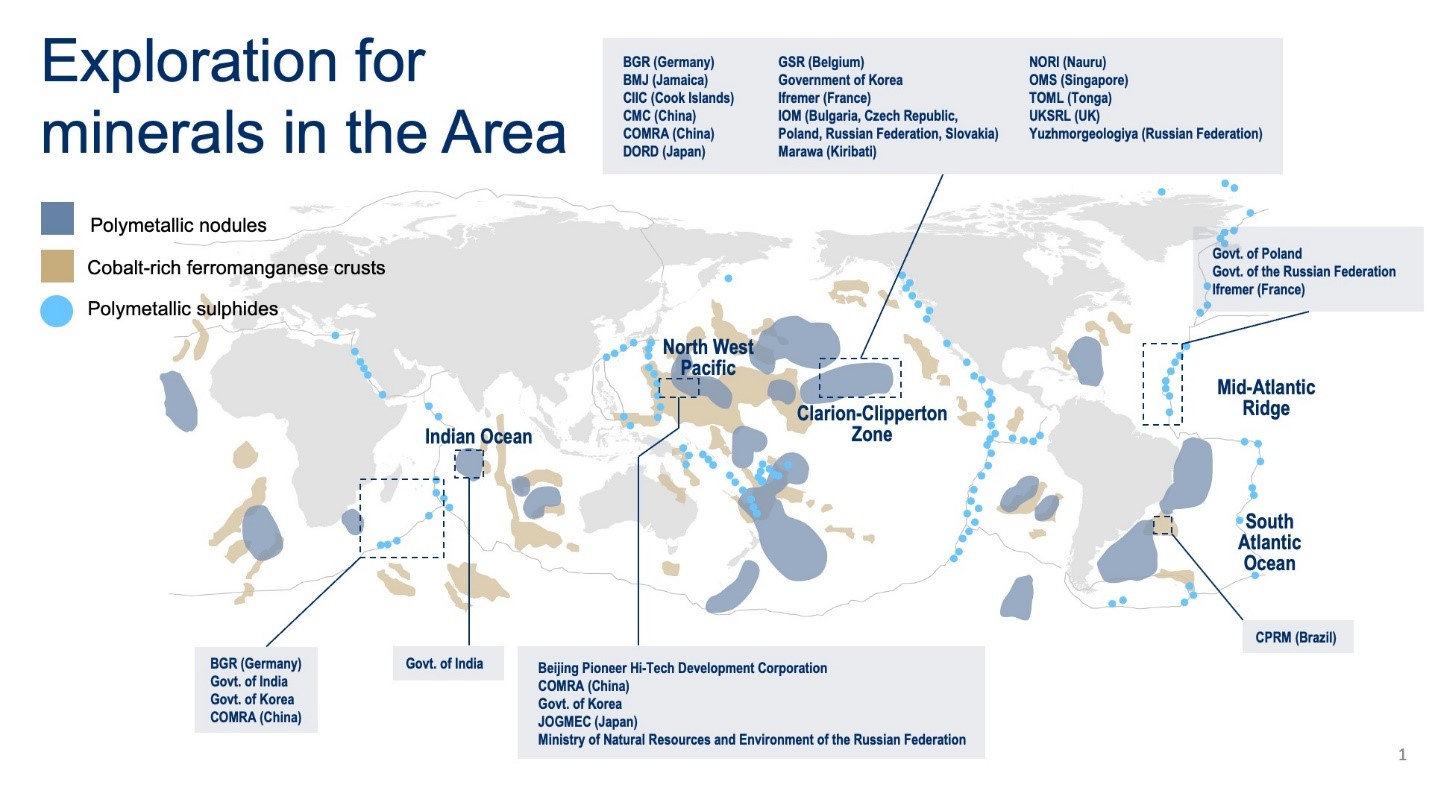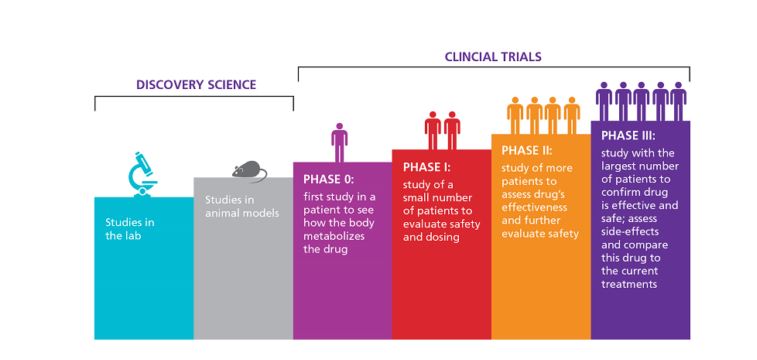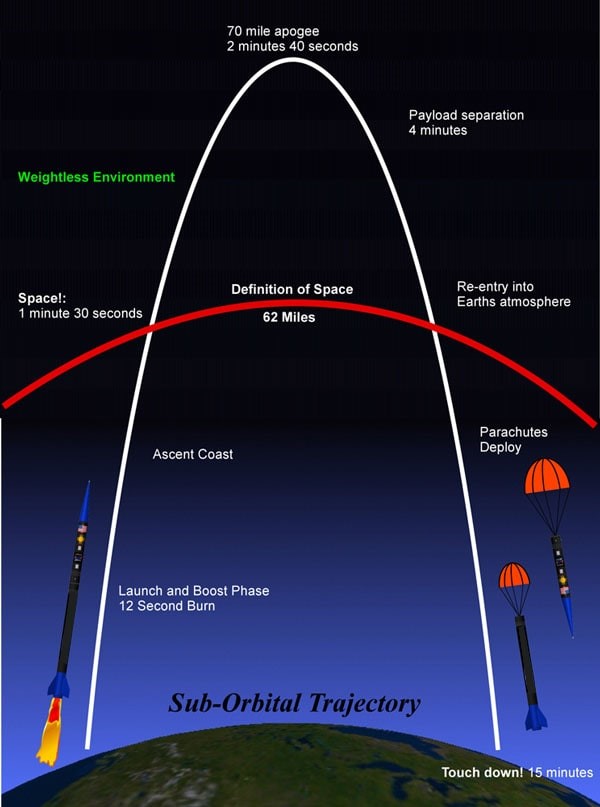Deep Sea mining Vs Mining on Land
Deep-sea mining
- It is the process of retrieving mineral deposits from the deep seabed, the ocean below 200m which covers about two-thirds of the total seafloor.
- Deep sea mining will be conducted to extract key battery materials such as cobalt, copper, nickel, and manganese from rocks called "polymetallic nodules”.
- Benefits - Deep-sea mining has metals crucial to making the transition to clean energy.
- Threat - Research suggests that deep sea mining could destroy habitats and wipe out species.

- The International Seabed Authority (ISA) regulates activities in the seabed beyond national jurisdiction.
- Seabed mining doesn't use child labor like much of the land mining does.
- It has a life-cycle carbon footprint that is 90% less than land mining.
Deep sea mining in India
- The International Seabed Authority has allocated about 75,0000 square kilometres in the Central Indian Ocean Basin (CIOB) to conduct exploratory mining.
- Union cabinet introduced ‘Deep Ocean Mission’ to be implemented by the Ministry of Earth Sciences.
- India has also committed to the High Seas treaty that seeks to protect 30% of the world’s ocean by 2030.
Mining on Land
- Mining is the extraction (removal) of minerals and metals from earth.
- Examples - Manganese, tantalum, cassiterite, copper, tin, nickel, bauxite (aluminum ore), iron ore, gold, silver, and diamonds.
- Mining on land can be broadly classified into 2 types - Surface mining and underground mining
- Surface Mining - In surface mining, the ground is blasted so that ores near Earth's surface can be removed and carried to refineries to extract the minerals.
- Surface mining can be destructive to the surrounding landscape, leaving huge open pits behind.
- Underground Mining - In underground mining, ores are removed from deep within the earth.
- Mining in India
- The Mining industry in India is one of the core industries of the economy governed by Ministry of Mines.
- India has large reserves of Iron ore, Bauxite, Chromium, Manganese ore, Baryte, Rare earth and Mineral salts.
- India is 2nd largest crude steel producer in the World.
International Seabed Authority
- Establishment - An autonomous international organization established in 1994 under
- 1982 United Nations Convention on the Law of the Sea (UNCLOS).
- 1994 Agreement relating to the Implementation of Part XI of the United Nations Convention on the Law of the Sea (1994 Agreement).
- Headquarters -Kingston, Jamaica
- Members -168 Members which includes 167 Member States and the European Union
- Exclusive Economic Zones - ISA holds authority over the ocean floors outside of its 168 member states’ Exclusive Economic Zones.
- Protects marine environment -ISA has the mandate to ensure the effective protection of the marine environment from harmful effects that may arise from deep-seabed-related activities.
- United Nations Convention on the Law of the Sea (UNCLOS) - ISA is the organization through which States Parties to UNCLOS organize and control all mineral-resources-related activities in the area for the benefit of humankind.
Reference
The Hindu | Deep-sea mining will be as bad as mining on land
Algae Bloom in California
A recent outbreak of algae bloom has sickened and killed an unknown number of sea lions and dolphins in California.
- The bloom has been traced to the waters off Central California and off the northern reaches of Southern California where warm water and cooler water coming up from the depths.
- The breadth of the poisoning can cause brain damage, seizures and death in sea lions.
- Algae bloom - It occurs when colonies of algae plant-like organisms that live in the sea and freshwater grow out of control while producing toxic or harmful effects on people, fish, shellfish, marine mammals, and birds.
- It is caused both by natural and man-made.
- The algae is a natural phenomenon that causes the production of a neurotoxin called domoic acid.
- The blooms can also proliferate because of human causes such as climate change and an excess of nitrates washed out to sea.
- Ideal condition for an Algae bloom
- Increased nutrients, warmer temperature, abundant light, and stable wind conditions can cause Algae blooms.
- Increased nutrients and warmer temperature of water.
- Environmental conditions like abundant light and stable wind can cause Algae blooms.
- Urban runoff that includes farm fertilizer and human waste.
- Upwelling – Upwelling is a process in which currents bring deep, cold water to the surface of the ocean it happens as a result of winds and the rotation of the Earth.
- Types
- Cyanobacteria - Blue-green algae.
- Dinoflagellates – Microalgae or red tide.
- Diatoms – Microalgae or red tide.
|
California Sea lions
- It is a coastal eared seal native to western North America.
- It is one of 6 species of sea lions.
- IUCN Status – Least Concern.
|
Reference
The Hindu | Sick sea lions washing ashore in California due to algae bloom
Drugs and Clinical Trial (Amendment) Rules, 2023
An amendment to the New Drugs and Clinical Trial Rules (2023), recently passed by the Government of India.
- It is an amendment to the Drugs and Clinical Trials Rules of 2019.
- Amendment - To replace the use of animals in research, especially in drug testing.
- Also authorises researchers to instead use non-animal and human-relevant methods.
- Alternatives - These methods includes technologies like 3D organoids, organs-on-chip, and advanced computational methods, to test the safety and efficacy of new drugs.
- Challenges in clinical trials
- Developing an organ-on-a-chip system typically requires multidisciplinary knowledge.
- It concerns that resources are currently imported from the U.S., Europe, and Japan.
Drugs and Clinical Trials Rules, 2019
- Ministry – Union ministry for health and Family welfare.
- Aim – To promote clinical research in India and further the conduct of ethical and quality clinical trials in the country.
- Clinical Trials - The rules reduced the time for approving applications to 30 days for drugs discovered in India or whose research and development has been done in India and are proposed to be manufactured and marketed in India.
- For drugs developed outside the country, the approval time has been fixed to 90 days.
- Drug Controller General of India (DGCI) has waived off the clinical trials for the drugs approved and marketed in the European Union, the UK, Australia, Canada, Japan and the U.S.
- The rules also ensure patient safety and the ethics committee will monitor the trails and decide on amount of compensation in cases of adverse events.
- Orphan drugs - For the first time, orphan drugs have been defined as intended to treat conditions which affects not more than five lakh persons in India.
- In addition, fee waivers for orphan drug trials is likely to encourage more trials for rare diseases in India.

Central Drugs Standard Control Organization (CDSCO)
- CDSCO is the national regulatory body for pharmaceuticals and medical devices in India.
- It is divided into zonal offices which do pre-licensing and post-licensing inspections, post-market surveillance, and recalls when needed.
- Drug Controller General of India (DCGI) is an organ of the CDSCO which is responsible for approving and licensing of drugs and medical devices.
- The DCGI is advised by the Drug Technical Advisory Board (DTAB) and the Drug Consultative Committee (DCC).
Reference
The Hindu | India takes step to remove animals from drug-testing process
Lithium Titanate Battery
Lithium titanate battery technology a boon to the energy storage market overcoming the limitations of Li-ion batteries.
- A lithium-titanate or lithium titanate oxide (LTO) battery is an improved version of Lithium ion batteries (LiB).
- Click here to know more about Lithium-ion Battery.
- Comparison - Lithium titanate battery utilises lithium-titanate nanocrystals instead of carbon on the surface of the anode.
- Lithium-titanate nanocrystals allow the anode to gain more surface area than carbon which permits the electrons to enter and exit the anode quickly.
- The ability to donate or accept electrons in the electrolytic solutions of lithium ions with titanium oxides is more likely than the same reaction with graphite.
- This allows for fast charging capacity in the case of lithium titanate than in the case of carbon.
- Unlike conventional LiB, it has lower inherent charge.
- Lithium dendrites are less likely to form in the case of titanate.
Lithium dendrites are extensions of metal that enter into the solid electrolyte and finally cross from one electrode to the other and ultimately short out the battery cell
- Advantages of LTO over Li battery
- It offers fast charging.
- It has long battery life.
- It has low-temperature resistance.
- It is fire-resistant.
- Suitable for solar batteries
- Suitable for applications with dedicated line buses, terminal trailers and other transportation systems.
- Disadvantages
- It will induce low specific energy of about 30–110 watt-hours per kilogram.
- High cost of production.
Reference
Down to Earth | Lithium titanate battery technology
VSS Unity
Recently a 6 person crew on Virgin Galactic’s VSS unity spaceship took a suborbital flight and reached the edge of space.
- Virgin Galactic is a British-American space tourism company, operating in the United States.
- Founders - Richard Branson and the Virgin Group.
- Virgin Galactic is launching space tourists and researchers onto suborbital trajectories.
- VSS unity - It is a rocket-powered plane which took its first commercial space flight in the ‘Galactic 01’ mission.
- ‘Galactic 01’ took about 90 minutes for the entire trip.
- The space plane reached a peak altitude of more than 52 miles (85 kilometers).
The Edge of Space
- Karman line - The Karman line is the boundary between the Earth’s atmosphere and outer space at an altitude of 100km above sea level.
- It is an internationally recognised boundary of space.
- The Karman line is near the transition between the upper mesosphere and lower thermosphere.
- NASA and the US Air Force, considers 50 miles as the border of space.

Suborbital Trajectory
- When an object travels at a horizontal speed of about 28,000 km/hr or more, it goes into orbit once it is above the atmosphere.
- Satellites need to reach that threshold speed in order to orbit Earth.
- Such a satellite would be accelerating towards the Earth due to gravity, but its horizontal movement is fast enough to offset the downward motion so that it moves along a circular path.
- Any object travelling slower than 28,000 km/hr must eventually return to Earth.
Reference
The Hindu | Italian researchers reach the edge of space

